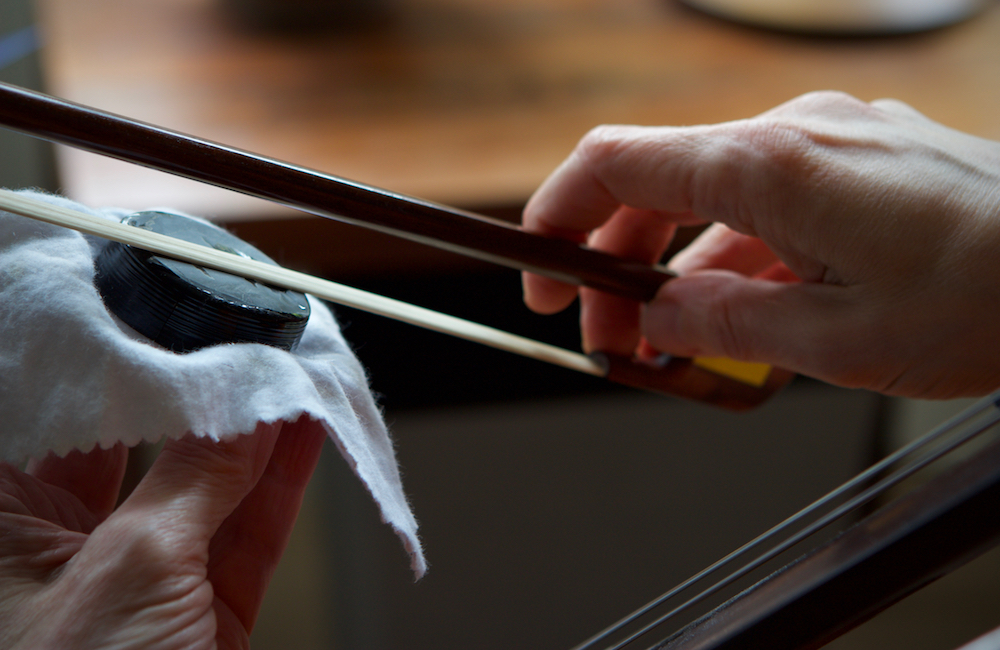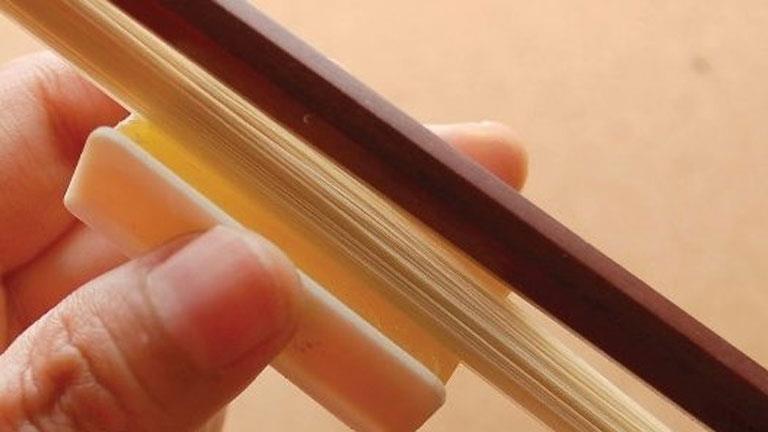Understanding when and how to apply rosin to your violin bow is essential for every violinist, whether you’re a beginner or a seasoned performer. In this guide, we delve into the nuances of rosin application, so you can optimize your bowing technique and improve your overall sound.
Introduction
The application of rosin on a violin bow is one of those small yet critical aspects of violin playing that can dramatically affect your sound. Despite its importance, there isn’t a one-size-fits-all answer to how often you should rosin your bow. However, understanding some key factors can help you develop a more informed approach.
What is Rosin?
Rosin is a resin obtained from pine trees that comes in a solid form. It is crucial for creating friction between the bow hair and the violin strings, allowing for sound production. Without adequate rosin, your bow will slide across the strings with little to no grip, resulting in a weak or scratchy sound.
Signs You Need to Rosin Your Bow

Before diving into the how-to’s, it’s essential to know when your bow needs rosin. Here are some indicators:
- Squeaky Sound: A squeaky or airy sound usually suggests a lack of grip.
- Poor Response: Difficulty in initiating sound or inconsistent tone.
- Visual Inspection: If you look closely and see that the bow hair looks too smooth or shiny, it’s time to apply rosin.
Factors Affecting Rosin Application
Playing Time
The more you play, the more often you’ll need to apply rosin. As a rule of thumb:
- Daily Players: Apply a light layer of rosin every 1-2 days.
- Weekly Players: Apply rosin at least once a week.
- Occasional Players: Rosin your bow every time you play after a long break.
Type of Music
The genre of music you’re playing can also influence how often you need to rosin your bow.
- Classical: Classical pieces often require more nuanced bowing techniques, potentially requiring more frequent rosin application.
- Fiddle/Bluegrass: These styles may require less frequent rosin application due to more aggressive bowing, which naturally distributes rosin.
Humidity and Weather
Humidity and temperature changes can affect how rosin adheres to your bow.
- High Humidity: May require you to rosin your bow more frequently.
- Low Humidity/Cold Weather: Rosin may adhere better, reducing the need for frequent application.
Tips for Applying Rosin

Rosining your bow correctly is an essential skill for producing the best sound and for preserving the longevity of both your bow and your violin. Here, we’ll delve deeper into each tip to help you understand why they’re important and how to implement them effectively.
Clean Your Bow
Why It’s Important:
Old or excess rosin can accumulate on the bow hair and create a layer that prevents fresh rosin from adhering effectively. This can result in a compromised sound quality and less grip on the strings.
How to Implement:
To clean your bow, you can gently use a soft, dry cloth to wipe away excess rosin from the bow hair. Make sure to do this carefully to avoid damaging the delicate horsehair. Some musicians use specialized cleaning solutions designed for bow hair, but a gentle wipe-down usually suffices for most players.
Use Long, Smooth Strokes
Why It’s Important:
Applying rosin evenly across the entire bow ensures that all the bow hairs will effectively grip the strings. Uneven rosin application can lead to an inconsistent sound and less control over your bowing techniques.
How to Implement:
Hold the rosin in one hand and the bow in the other, then apply the rosin using long, smooth strokes, starting at the frog (the end closest to your hand) and ending at the tip. Usually, 4-5 strokes are enough for a light application. Make sure the pressure is consistent but not too hard, to avoid damaging the bow hair.
Don’t Overapply
Why It’s Important:
More rosin is not necessarily better. Over-rosining can lead to a harsh, scratchy tone and create a build-up of rosin dust on the strings and the violin body, which could be detrimental in the long run.
How to Implement:
A light layer of rosin is generally sufficient. Start with a few long, smooth strokes and test the sound. If the bow still slides or sounds weak, apply a couple more strokes. It’s better to apply too little and add more, rather than overdo it initially.
Quality Matters
Why It’s Important:
The quality of rosin can significantly impact your sound. Poor-quality rosin may not adhere well to the bow, could degrade faster, or produce an inconsistent tone.
How to Implement:
Invest in a reputable brand of rosin that matches your playing level and style. There are various types of rosin tailored for different climates, types of music, and skill levels. Consult with your music teacher or a professional to find what’s best for you.
By paying attention to these details when applying rosin, you’ll not only improve the sound quality of your violin but also prolong the life of your instrument and bow.
Conclusion
Rosining your violin bow is an art as much as it is a necessity. Paying attention to the signs and factors that affect rosin application can guide you to develop your own schedule. Remember, it’s always better to apply too little than too much. As with everything in music, the key is practice, observation, and fine-tuning your technique to find what works best for you.

Leave a Reply